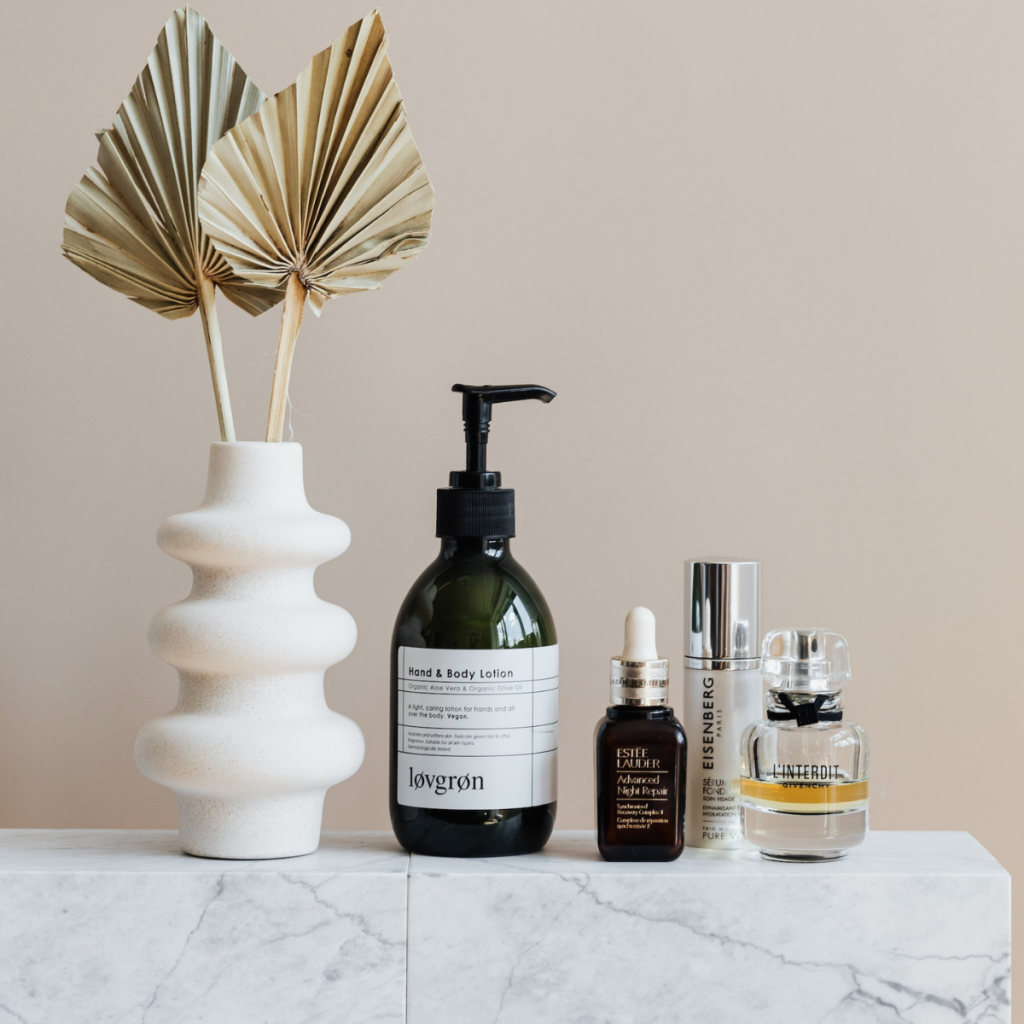Learn how to effectively seal and repair split ends with our comprehensive guide.
How to Seal and Repair Split Ends: Products and Treatments Explained
One of the common struggles that many people face when it comes to their hair is dealing with split ends. These pesky little things can make your hair look dull, damaged, and frizzy. But fear not! In this article, we will dive into the world of split ends and explore the best products and treatments that can help you seal and repair them. So, let’s get started!
Understanding Split Ends: Causes and Effects
Before we jump into the solutions, it’s essential to understand what split ends are and what causes them.
Split ends are basically the splitting or fraying of the hair shaft, resulting in a Y or V shape at the end of the hair strand. They occur when the protective outer layer of the hair, known as the cuticle, gets damaged or breaks due to various factors.
Now, let’s delve deeper into the causes of split ends to gain a comprehensive understanding.

What are Split Ends?
Split ends refer to the condition where the hair shaft splits or frays, leading to a Y or V shape at the end of each strand. This splitting occurs when the outer layer of the hair, called the cuticle, becomes damaged or breaks. The cuticle acts as a protective barrier for the inner layers of the hair, and when it weakens, the hair becomes vulnerable to splitting.
Common Causes of Split Ends:
There are several culprits behind split ends, and it’s important to be aware of them to prevent further damage to your hair:
- Excessive heat styling: Using curling irons, straighteners, and blow dryers on high heat can damage the hair, leading to split ends. The intense heat weakens the cuticle, making it more prone to splitting.
- Overbrushing: Brushing your hair too vigorously or using a brush that’s not suitable for your hair type can cause breakage and split ends. The excessive friction from brushing can weaken the hair shaft, leading to splitting.
- Chemical treatments: Coloring, perming, and relaxing can weaken the hair structure, making it more prone to splitting. The chemicals used in these treatments can strip the hair of its natural oils and proteins, leaving it brittle and susceptible to damage.
- Environmental factors: Exposure to harsh elements like sunlight, wind, and pollution can take a toll on your hair, resulting in split ends. UV rays from the sun can weaken the hair fibers, while pollutants and dry air can strip the hair of its moisture, making it more prone to splitting.
How Split Ends Affect Your Hair Health:
Now that we know what split ends are and what causes them, it’s essential to understand the impact they can have on your hair health.
Split ends not only make your hair appear frizzy and unkempt, but they can also hinder hair growth and lead to further breakage if left unaddressed. When the hair shaft splits, it becomes weaker and more prone to breakage. This can result in the hair breaking off at various lengths, leading to uneven and unhealthy-looking hair.
Furthermore, split ends can hinder the growth of healthy hair. When the ends of the hair split, the damage can travel up the hair shaft, making it necessary to trim off more length to remove the split ends. This constant trimming can impede the progress of growing long, luscious locks.
Repairing and sealing split ends is crucial to maintain healthy and vibrant-looking hair. By addressing split ends promptly and adopting preventive measures, you can ensure that your hair remains strong, smooth, and full of life.
Prevention is Better than Cure: Tips to Avoid Split Ends
When it comes to split ends, prevention is undoubtedly key. By following these tips, you can minimize the risk of developing split ends in the first place.
Split ends can be a frustrating and common hair problem that many people face. They occur when the protective outer layer of the hair, known as the cuticle, becomes damaged and starts to fray. This can happen due to various factors such as excessive heat styling, chemical treatments, harsh brushing, and environmental damage.

Proper Hair Washing and Conditioning Techniques
Start by using a gentle shampoo and conditioner that suits your hair type. Avoid vigorous rubbing of the hair while washing and opt for a wide-toothed comb or fingers to detangle wet hair. This gentle approach prevents unnecessary stress on the hair, reducing the chances of split ends. Remember to rinse thoroughly to remove any product residue that can contribute to split ends.
Additionally, it is important to note that over-washing your hair can strip it of its natural oils, leading to dryness and breakage. Aim to wash your hair every 2-3 days, or as needed, to maintain a healthy balance.
Importance of Regular Trimming
Getting regular trims may seem counterintuitive when you’re trying to grow out your hair, but it’s crucial for preventing split ends. Trimming your hair every 6-8 weeks helps to get rid of those pesky split ends, keeping your hair healthy and preventing further breakage.
During a trim, a small amount of hair is snipped off the ends, removing any split or damaged strands. This not only improves the overall appearance of your hair but also prevents the split ends from traveling further up the hair shaft, which can lead to more significant damage.
Choosing the Right Hair Products
Opt for hair products that are specially formulated to repair and protect your hair. Look for ingredients like keratin, argan oil, and vitamins that provide nourishment and strengthen the hair shaft. These ingredients help to replenish moisture, seal the cuticle, and reduce the likelihood of split ends.
When selecting hair products, it is important to consider your hair type and specific needs. For example, if you have dry or damaged hair, opt for a moisturizing shampoo and conditioner that will help restore hydration and repair any existing damage. If you frequently heat style your hair, consider using a heat protectant spray to minimize damage from styling tools.
Be cautious of products with harsh chemicals that can damage your hair further. Avoid products that contain sulfates, parabens, and alcohol, as these can strip the hair of its natural oils and cause dryness and breakage.
By following these tips and incorporating them into your hair care routine, you can significantly reduce the occurrence of split ends. Remember, prevention is always better than cure when it comes to maintaining healthy and beautiful hair.
Over-the-Counter Products for Split Ends: A Comprehensive Review
When it comes to tackling split ends, the market is flooded with various products that claim to work wonders. Let’s take a closer look at some popular options.
Hair Serums and Their Benefits
Hair serums are like magic potions for your split ends. They provide a protective barrier, seal the cuticle, and add shine to your hair. Not only do they help in repairing split ends, but they also prevent further damage by providing a shield against external factors like pollution and heat styling tools. Look for serums enriched with nourishing oils like argan oil, coconut oil, or jojoba oil for maximum benefits. These oils are rich in vitamins and fatty acids that penetrate deep into the hair shaft, promoting repair and nourishment.
Additionally, hair serums are lightweight and non-greasy, making them suitable for all hair types. They can be applied to both wet and dry hair, making it convenient to incorporate them into your hair care routine. By adding a few drops of serum to your palms and running it through your hair, you can instantly transform dull and damaged ends into smooth and lustrous locks.
Deep Conditioning Masks: Do They Really Work?
Deep conditioning masks are a fantastic way to revive your hair and repair split ends. These masks are formulated with rich and nourishing ingredients that provide intense hydration and nourishment to the hair shaft. They work by penetrating deep into the hair follicles, replenishing moisture and repairing the damaged cuticles.
When choosing a deep conditioning mask, look for ingredients such as shea butter, avocado oil, or honey. Shea butter is known for its moisturizing properties and helps in reducing frizz and improving the overall texture of the hair. Avocado oil is rich in vitamins A, D, and E, which promote hair growth and repair damaged ends. Honey, on the other hand, is a natural humectant that locks in moisture, making your hair soft and manageable.
To use a deep conditioning mask, apply it generously to your hair after shampooing. Leave it on for the recommended time, usually 10-15 minutes, to allow the ingredients to deeply penetrate the hair shaft. Rinse thoroughly and enjoy the benefits of rejuvenated and healthier-looking hair. For optimal results, use a deep conditioning mask once a week.
The Role of Leave-In Conditioners
Leave-in conditioners are a great addition to any hair care routine, especially if you struggle with split ends. These lightweight formulas provide an extra layer of protection and hydration to your hair, keeping it moisturized and reducing the risk of breakage and split ends.
Leave-in conditioners are designed to be applied to damp hair and are not rinsed out, allowing them to continuously nourish and protect your hair throughout the day. They help in detangling the hair, making it easier to comb through and reducing the chances of further damage. Additionally, leave-in conditioners provide thermal protection, shielding your hair from the harmful effects of heat styling tools.
When choosing a leave-in conditioner, look for one that is specifically formulated for split ends and damaged hair. These conditioners often contain ingredients like keratin, which helps in restoring strength and elasticity to the hair, and silk proteins, which smooth the cuticles and add shine.
To use a leave-in conditioner, simply apply a small amount to your palms and distribute it evenly through your damp hair, focusing on the ends. Style your hair as usual, and enjoy the benefits of nourished and protected locks throughout the day.
Professional Treatments for Split Ends: What to Expect
If you find that over-the-counter products aren’t doing the trick, it might be time to consider professional treatments. Let’s explore some options!

Salon Treatments: Costs and Results
In-salon treatments, like hair masks and hot oil treatments, can work wonders for your split ends. These treatments are typically more intensive than at-home options, and they often involve the use of professional-grade products and tools. While they can be a bit pricey, the results are usually worth it.
Keratin Treatments: Pros and Cons
Keratin treatments are another popular option for those struggling with split ends. These protein-based treatments help to smooth the hair cuticle, reduce frizz, and make your hair more manageable. However, it’s important to note that keratin treatments can be quite expensive and may contain formaldehyde or other harsh chemicals. So, do your research and consult a professional before diving in.
The Science behind Hair Bonding Treatments
Hair bonding treatments, like Olaplex, are designed to repair and rebuild broken bonds in your hair. These treatments can be a game-changer for those with severely damaged hair and split ends. They work by reconnecting the broken disulfide bonds in the hair, leaving your locks stronger and healthier than ever before. So, if your split ends are taking over, consider giving a bonding treatment a try.
So, there you have it – a comprehensive guide to seal and repair split ends. Remember, prevention is key, but if you find yourself dealing with split ends, there are plenty of products and treatments available to help you on your journey to healthier, more beautiful hair. Say goodbye to split ends and hello to luscious, silky locks!





